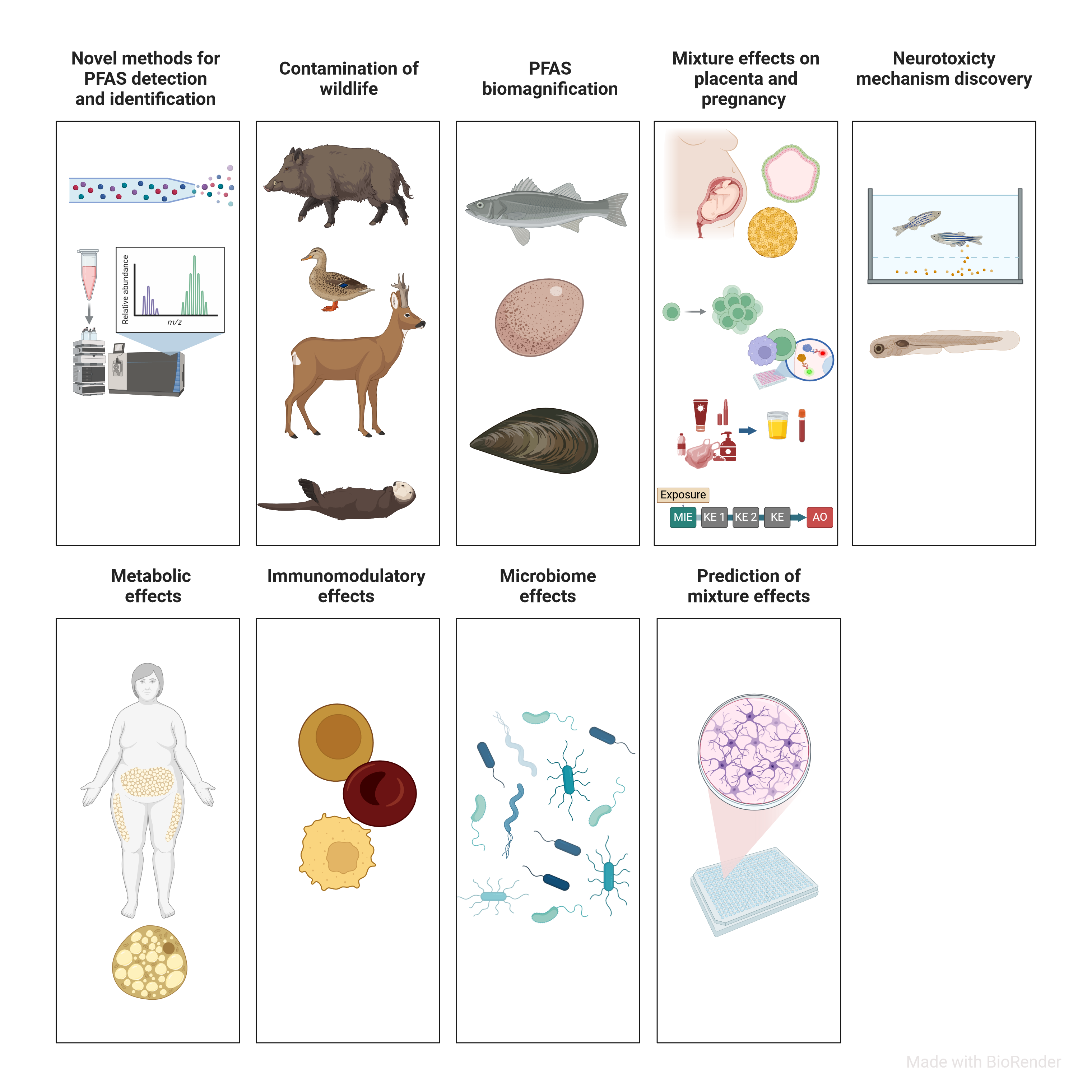PFAS-Exposition und Effekte

Themen und Projekte
PFAS act as baseline toxicants in many bioassays. We developed a prediction model for baseline toxicity that can be used to identify and prioritise PFAS with specific models of action.
Activities
Contributing scientists:
Luise Henneberger
Julia Huchthausen
Weiping Qin
Maria König
Beate Escher
PFAS have a high binding affinity to blood proteins at the low concentrations of occurrences. In in vitro bioassays they are more bioavailable as they are effective only at much higher concentrations. This difference in binding affinity needs to be accounted for in qivive models for Quantitative in vitro-to-in vivo extrapolation.
Activities
Contributing scientists:
Luise Henneberger
Julia Huchthausen
Weiping Qin
Maria König
Beate Escher
Neurotoxicity of mixtures of PFAS and other neuroactive organic pollutants are assessed through integrated in silico, in vitro cellular and in vivo models.
Activities
Contributing scientists:
Contributing scientists:
We study reproductive and immune toxicological impact of PFAS using different models.
Activities
Many PFAS are neuroactive in zebrafish. However, zebrafish embryo behavior data has yet to be used for human and ecological risk assessment. One reason is a lack of confidence that chemical-dependent changes in zebrafish behavior represent developmentally or acutely neurotoxic endpoints that are translationally relevant. One strategy that can build confidence in the use of these data is a better understanding of underlying mechanisms that drive behavior effects. Our work seeks to causally describe chemical mode of action to generate regulatory confidence that PFAS exposure is likely to disrupt neurodevelopment across taxa, including humans.
